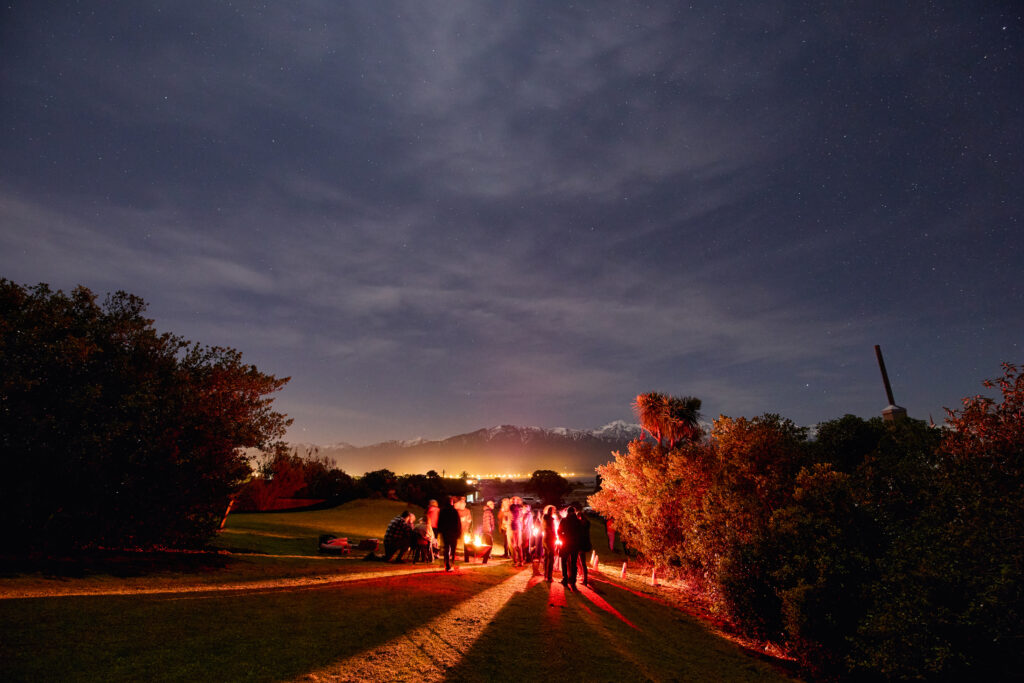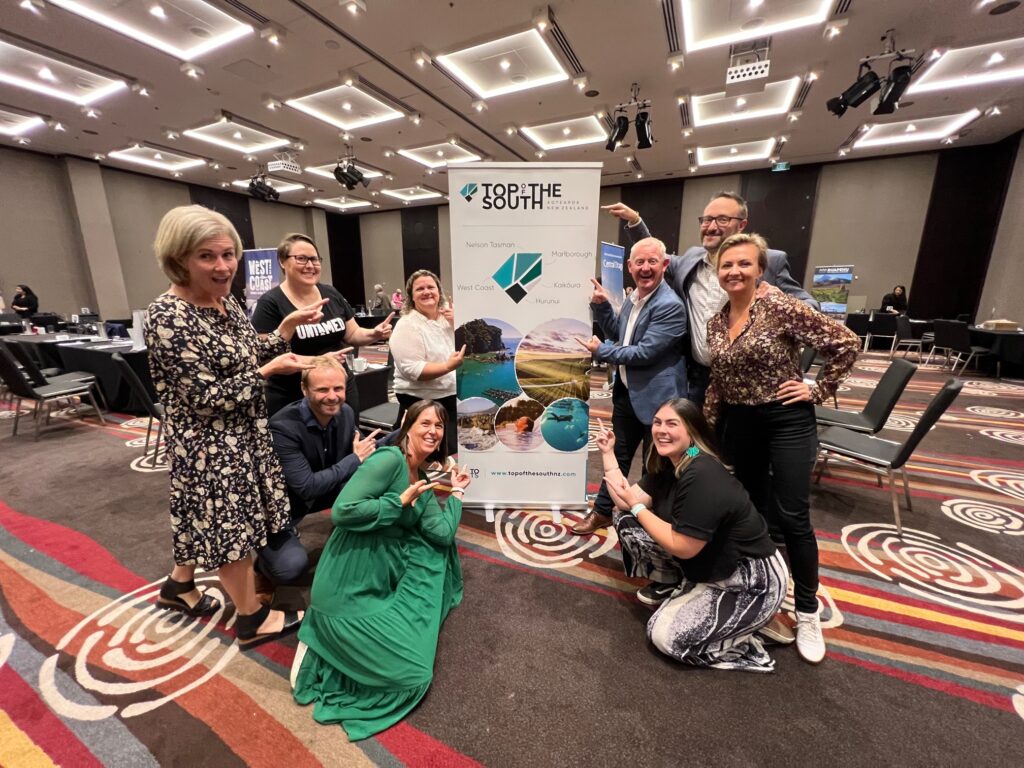THE VISION
“We strive to develop Kaikōura in an economically sustainable way and celebrate our coastal community, which is unique in its landscapes, seascapes, people, wildlife and history. A destination loved and treasured by all – our residents, our visitors and for those who come after us.”
Case Study Themes
Destination Management, Stewardship, Collaboration, Community.
Destination Website
Share
Highlights:
The Difference a Plan can make
Kaikōura recognised as an International Dark Sky Sanctuary, with positive results for local businesses, the environment, and the endemic Hutton's shearwater birds as well.
New Freedom camping bylaw introduced in 2023, in consultation with the community.
Collaboration with other regions to encourage multi-region, longer-stay travel.
A community united in efforts to ensure tourism and environmental sustainabbility go hand in hand
destination Kaikōura Case Study
Stewardship approach leading to ‘astronomical’ results in Kaikōura
Lisa Bond from Destination Kaikōura has a sign on her office wall that reads: “today we plant a seed for a tree we may never shelter under”. It’s a poignant message, and one she’s lived by while leading a new approach to sustainable tourism development in the Kaikōura region.
“It’s not actually about us, it’s about the future. What we have in Kaikōura and across all of Aotearoa is so special, and worth protecting.”
Kaikōura’s marine life and stunning coastal environment has made it world famous, bringing economic benefit and vibrancy to the community. But it’s also brought challenges, particularly during peak summer months when thousands of New Zealanders and international visitors flock to the region.
As a proud local with a history of working for one of the region’s leading marine tourism business, Lisa is well aware of the challenges and has taken it upon herself to lead a better tourism future for the region.
Lisa began her role as Destination Manager at Kaikōura’s regional tourism organisation in 2021, amid Covid-19 travel restrictions and at a time when the region had been feeling the strain of growing visitor numbers. Marine tourism was drawing increasingly large crowds, and a rising number of freedom campers was causing friction in places where supporting infrastructure was lacking.
While many tourism businesses were making changes on their own to create a more sustainable tourism operation, it was clear to Lisa that Destination Kaikōura would benefit by transitioning its role beyond destination marketing to one that focused more broadly on stewardship.
The result of her work carried out over 12 months alongside the community and Kaikōura District Council, with support from the Government’s Covid Recovery Fund, was the region’s Destination Management Plan 2022-2032. The plan laid out a fresh approach to tourism development in the region that would benefit Kaikōura’s people, environment and culture, as well as its economy.
Unlike some other regions, Kaikōura’s destination management plan was developed in-house; a process made easier because of Lisa’s extensive relationships across the community and the fact she also happens to be a councillor. Not only does she know many of the council staff personally, but she understands the pressures the council faces and its processes.
The latter was a factor behind the decision to create Kaikōura’s destination management plan with a 10-year timeframe, to ensure it aligned with the timeframe of council long-term plans, which also have a 10-year duration.
Lisa says she was also fortunate a lot of work had already been done on tourism development in the region, including the Reimagine Kaikōura plan created after the 2016 Kaikōura earthquake and The Poha Project proposal for economic recovery from the Covid-19 pandemic.
“We took those two huge projects that the community had already had incredible voice into and then combined and built on all the hard mahi that had already been done.”
Despite that head start, Lisa says creating the Destination Management Plan still involved countless meetings with council and local organisations to gather their views, workshops with tourism operators, meetings with local rūnanga and an open forum with the wider community. Bond also made sure to run consultations at schools to ensure the voice of the next generation was considered.
“Our plan has come from our own hearts, our own mahi, and when the words on the paper come from the heart of the community, you get more buy in because people can hear their own voice in it. We hold up the document proudly because that’s us.”
A ‘Heavenly’ Outcome
The new approach is already bringing results, Lisa says. In 2023, Kaikōura District Council introduced a bylaw that designated more than 50 areas where freedom camping would be allowed, with the remainder of the district off limits.
“While most of us all like freedom camping and the majority of freedom campers are responsible, there were some that left rubbish or toileted in areas where they shouldn’t.” Decisions around where freedom camping would be permitted were community led, and the step has made a big difference to residents’ views about visitors to the region.
But Lisa believes the biggest success has been even more ‘heavenly’.
“Our biggest win is that on 12 September we were recognised as an International Dark Sky Sanctuary.
A major benefit of ‘astro tourism’, and the reason Destination Kaikōura has made it such a focus of its destination stewardship approach, is its potential to encourage visitation during a period of the year that is traditionally less busy in the region.
“When is the dark sky the best? It’s in the off season when fewer people traditionally come.”
The work is already paying dividends, with several new businesses bringing their astronomical ambitions to the area. That includes Moana Skies, which is now offering a cosmic experience from its mountaintop ‘stargazing lodge’ and Rachel Gillespie’s Night Sky Experience, which teaches the principles and techniques of astrophotography on a tour some of Kaikōura’s top dark sky sites, including amazing views of the Milky Way ‘rising’ off the coast.
Six of the best free locations for stargazing have been identified too, with signage featuring QR codes that people can scan to get hints about where to look and what to look out for at each spot.
“Thousands of people are now scanning the codes, including lots of locals,” Lisa says.

Star Party celebrating Dark Sky Sanctuary status on 12 September 2024.
Kaikōura’s Birds are Benefitting Too
Protecting an endangered bird that’s endemic to the region is another reason why astro tourism has become such an important piece of Kaikōura’s environmental stewardship journey.
The Hutton’s shearwater lives in the hills 1,000m above sea level but flies down to the Kaikōura coast at night, relying on the stars to navigate. As the town has grown, the glow of lights from buildings, traffic and street poles has caused issues for the birds, which can become confused and crash land among the town’s streets in the evening.
Lisa says that by making astro tourism central to the town’s identity and encouraging local businesses to reduce light pollution for better viewing of the night sky, the birds also benefit. Destination Kaikōura’s close connection with council enabled it to work closely with council on district wide stewardship initiatives to assist with this conservation project. For example, the council has passed a bylaw requiring anyone that builds in Kaikōura to build under a lighting plan that includes a range of light-reducing measures including requirements for outdoor lights to be pointing downwards, and to be capped.
Local hotels inform their guests about the birds and request they close their curtain at night to reduce light shining out their windows. Fonterra has spoken to farmers about what they can do to mitigate light pollution on their properties, and the council is in discussion with the New Zealand Transport Agency to change the lighting on the highway, without impacting driver safety.
Individual residents are on board too, with dozens of volunteers joining nightly patrols to find and rescue any birds that have crash landed and become confused, taking them to the coast where they can get their bearings.
“The Hutton’s shearwater story is a great example of how our destination stewardship approach has helped bring the whole community along for the ride.
“Local schools have been part of it as well, and as a council we’ve built a predator proof fence around the birds’ habitats in the hills, and artificial burrows to make nesting easier.”
“Stewardship is at the heart of our community and stakeholders aspirations’ and has been key to the success of our DMP so far – it’s about all of us coming together to care for our people and place, ensuring what we cherish today thrives for generations to come.”

Top of the South collaboration team.
Looking Beyond Regional Boundaries
Although Kaikōura’s destination management plan is specific to Destination Kaikōura’s own slice of coastal paradise, Lisa says they still went out of their way to work with other regional tourism organisations in the central and upper South Island during its development.
“The guest knows no boundaries”, Lisa says, so it made sense for the regional tourism bodies to collaborate on ways to ensure consistent information and encourage visitors to one region to extend their visit to neighbouring areas as well.
The Alpine Pacific Touring Route, which travels through Christchurch, Hanmer Springs and Waipara, as well as Kaikōura, is a prime example of a drawcard that traverses multiple regional tourism organisation’s areas, so a united message and joint promotion makes sense, she says.
Other examples where multi-region collaboration is leading to positive outcomes include The Whale Trail, currently being built between Kaikōura and Picton, and the new Top of the South Touring Route, developed by Destination Kaikōura, Visit Hurunui, Development West Coast, Nelson Tasman and Destination Marlborough. Both of these initiatives have resulted from discussions that started during the destination management planning process and have involved multi-regional marketing, operator capability building and product development.
Last, but not least, Lisa says the regional tourism organisations at the top of the South Island also collaborate on travel trade familiarisation trips to help influence the way travel trade are selling itineraries for this part of the country, promoting ways visitors can start their holiday in one town, travel around the top of the south, and leave from somewhere else, encouraging longer and more varied stays.
“It’s all part of managing tourism in a way that maximises benefit to all – our communities, our economies, our people, and of course those who come after us.”


